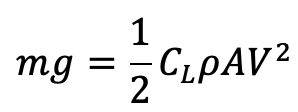Ingenuity: The first flight on another world
How we managed to fly a helicopter on Mars.
You read that headline right. NASA put a helicopter on Mars and made it fly. I know what you might be thinking: the hard part is getting it there safely, right? Wrong. Mars is a very, very different place than Earth and none of those differences make it easier for something to fly. Nonetheless, as Dora would say, We Did It. And we did it pretty darn well at that.
A little background—NASA launched the helicopter, named Ingenuity, and a rover, named Perseverance, on an Atlas V rocket back in late July of 2020. The duo traveled over 100 million miles to reach the red planet on February 18, 2021—6 months later. [1]
The green here is Mars, the blue is Earth, and the pink is the spacecraft. Once the rover and helicopter reached Mars, they descended and landed on the rocky surface in Jezero Crater. The overall goal of the mission was to search for any current or past signs of life. After landing, the rover “dropped off” the helicopter at its designated take-off zone and drove clear. Once all of the testing was complete, and the flight systems were ready to go, this happened: [2]
On April 19, 2021, Ingenuity completed the first powered flight, using lifting surfaces, on another planet in history. “Flight using lifting surfaces” essentially just means not with rockets. This is a major breakthrough because Ingenuity doesn’t have to carry jet fuel to fly. It is powered by an RTG (radioisotope thermoelectric generator) so it only weighs 4 pounds [3]. It can access parts of Mars that the rover, or even humans, cannot reach. It allows us to explore even more of the Martian surface in search for extraterrestrial life and the origins of our solar system. All this is literally incredible, but how does it work? And more importantly, why does it work?
Remember the equation for lift? Here it is in case you forgot, but I know you didn’t.
The important variable here is rho (the air density). Mars’ atmosphere is 1.5% as dense as Earth’s. That means, to produce the same amount of lift as it would on Earth, Ingenuity needs to employ rotors that are 65 times larger, spin them 8 times faster, or a combination of the two.
The one benefit we have to work with is Mars’ size. Mars is 15% as large and 10% as heavy as Earth, which, thanks to some quadradic terms in the gravity equation, result in a gravitational acceleration at the surface 38% that of Earth. This means that you would weigh 62% less on Mars than on Earth.
The force due to gravity can be simply found with this equation:
Where m is an object’s mass and g is the gravitational constant (g=9.81 on Earth and g=3.71 on Mars). For the copter to fly, the lift force it generates has to be greater than or equal to the force it feels due to gravity. In other words:
All this news is good news. To balance this equation, those rotors that were 65 times larger now only have to be ~25 times as large, or spin 5 times as fast. NASA uses a combination of the two, along with ultra-light structural materials and batteries, to make this flight possible. Unfortunately for us, however, we can’t just overcome gravity and call it a day.
Mars bottoms out at nearly -200 degrees Fahrenheit [4], which is extremely difficult for electronics to withstand. We do this and more while in space though, so that’s not our biggest hurdle. Something that Mars has that space doesn’t is dust. A lot of it. Mars consistently has dust storms that would wreak havoc on delicate electronics, so all of them have to be sealed airtight before they leave the lab. To add even more insult to injury, the thin atmosphere on Mars lets in a whole lot more solar radiation (this is one of the largest dangers to humans living there, and why all long-term bases would have to be underground). This radiation is deadly to electronics too so the whole copter is covered in radiation protection. All of this adds weight, cost, and complexity to the design, but when you’re going to Mars, you’ll take all of the precautions you can get. That’s why Ingenuity had to wait over a week after it was deployed before it could stretch its wings and take its first flight. Speaking of waiting, don’t even get me started about the communications delay. It took 16 minutes for our signal to start flying to get to Mars, and another 16 minutes before we even knew if the flight was successful. [5]
Unfortunately for the Martian skies, Ingenuity won’t be flying as much as you might think. It can only fly up to 16 ft high for about 90 seconds before it has to land and recharge. Its entire scientific mission consists of little “bunny hops” to get from one spot to another. It’s hard, however, to expect much more from a helicopter that has to fly in an atmosphere equivalent to 100,000 ft above Earth’s surface. And at $20 million per pound, this little guy is a flying gold mine—but I’ll argue that he’s well worth the money. [5]
That’s it for this week’s edition of It’s Not Rocket Science! Thank you as always for reading and don’t forget to subscribe for more newsletters like this one!
Check out last week’s newsletter here.
Special thanks to Emory Eastin for the inspiration.
For more details…
Cover Image: https://www.nasa.gov/aeroresearch/nasa-aeronautics-experts-help-prepare-ingenuity-to-fly-on-mars
[1] https://en.wikipedia.org/wiki/Mars_2020
[3] https://en.wikipedia.org/wiki/Atmosphere_of_Mars
[5] https://en.wikipedia.org/wiki/Ingenuity_(helicopter)#Mission_profile







Matthew, love the article. Have been watching the news on Ingenuity. I find its flight incredible and am so thankful that there are people as brilliant as you to figure this all out.
Great article! And thanks for reminding me of the equation for lift - I always forget that! :)